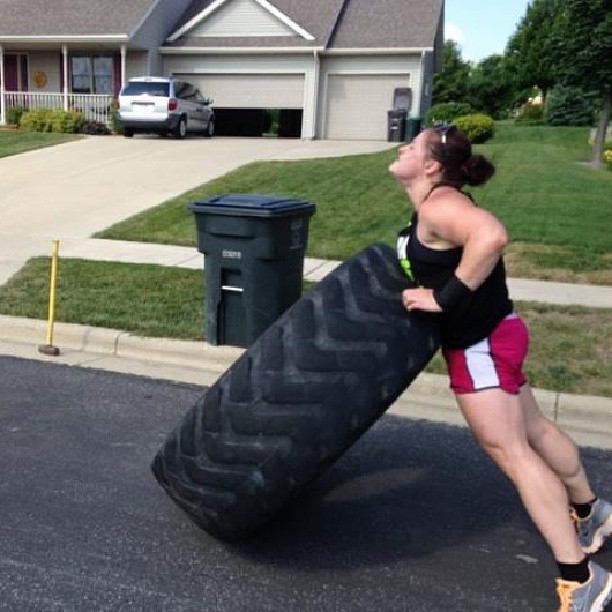
by | Dec 19, 2013 | Cardio, Metabolism Reset, Q & A
So, you’ve finally made the decision to go through with a metabolism reset. You’ve had it with diets and excessive exercise and you are ready to make the necessary changes to get your body functioning properly again.
We are proud of you. That first step is incredibly scary. The road that you have ahead is not easy, but it is worth it!
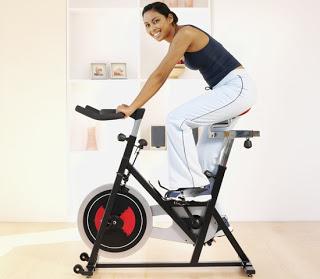
Cardio…how much is too much?
One question that we get asked quite frequently at EM2WL is about the amount of cardio that is “permissible” during a reset.
We are all about moving your body in a way that is enjoyable and achieving your fitness goals. We would never tell you to give up something you love! Even though we are passionate about getting women to lift heavy weights, we know that many of our readers really enjoy cardio, whether it is training for a marathon, crossfitting, or gettin your groove on at a Zumba class. As long as you are making sure to match your caloric goals to your activity level, you should be able to continue to participate in the activities you love. Just make sure to incorporate some heavy lifting in there in order to stimulate your metabolism and build that fat-burning muscle.
Unfortunately, many people are not asking these questions because they love cardio, but out of a place of fear. They are afraid that if they eat all this extra food, and do not compensate for it with extra activity, they are sure to balloon up.
It’s important to remember that the goal of a metabolism reset is NOT weight loss. Our bodies need energy to function properly. Breathing, eating, sleeping, doing the dishes, lifting weights, walking the dog…these are all activities which require energy. We get this energy from eating food. If we are not giving our bodies the nutrients that we need, our bodies will respond by taking nutrients from some other source. At a small deficit, some of this energy will come from the burning of adipose tissue (fat) for fuel. However, at a very large deficit (whether that is created through exercise or diet), the body will begin to conserve metabolic energy.
The purpose of a reset is to slowly get the body accustomed again to eating an appropriate number of calories for your activity level. Its is fairly common to gain weight as you begin to up calories, but eventually, weight should stabilize. Just as the body was quick to make adaptations to the lower calorie level, the body will quickly bounce back to eating a consistent and appropriate number of calories. It is crucial to be patient, consistent and to trust the process.

You have kids, a job, housework, and bills. Don’t let your fitness goals become one more stressor. Enjoy the journey!
One goal of your metabolism reset is to give your body a chance to relax and remove some of the stressors placed upon the body by restrictive dieting and excessive exercise.
Cortisol is a hormone known as “the stress hormone.” In response to stressful situations, cortisol levels will increase. Despite the negative press it receives, cortisol is a good thing! It helps us through those “fight or flight” situations by increasing our pain tolerance, giving us a surge of energy, and conserving energy expended. If you are being chased by a bear, that extra cortisol will help you to run for your life. After these situations, cortisol returns to normal levels and the body’s relaxation process kicks in.
However, many different types of stressors which are not really “fight or flight” scenarios can also spike cortisol levels. Not getting enough sleep, a trying family situation, eating at a caloric deficit, and exercise all place stress upon our bodies and can trigger the release of cortisol. If many of these stressors are occurring all at once, cortisol levels remain high, and the body may respond by making metabolic adaptations.
Too much cardio can elevate cortisol levels, particularly when not enough calories are being consumed.
Many of our readers are already finding it mentally (and often, physically) challenging to increase calories to the level that will support a healthy metabolism. Doing excessive cardio is often a way to make them “feel better” about the increase in calories. However, this creates a caloric deficit which will not allow for the healing process to take place. Increasing activity will increase energy needs during your reset. If you are already uncomfortable with eating more, you will want to keep the cardio to a minimum.
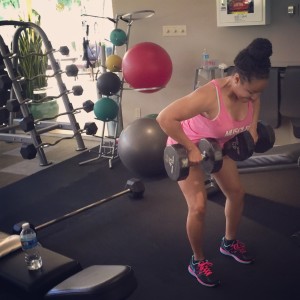
On the other hand, doing some heavy resistance training during your metabolism reset will yield a number of benefits. Provided the calories are sufficient, a metabolism reset can provide an environment for building some quality muscle. Often switching the emphasis from fat loss to muscle growth can be very refreshing and empowering, and it gives you something else to focus on. A pound of muscle burns more calories at rest than a pound of fat, so focusing on building muscle now will help you tremendously when the time comes for you to focus on losing fat later!
The bottom line? Taking a break from the cardio (for now) will also allow you to receive the maximum benefit from this later when you proceed into a caloric deficit. But if you absolutely feel like you cannot live without it, keep those cardio sessions short and sweet and make sure that you are fueling those cardio sessions.
 Becca is a busy wife and homeschooling mother to five children ages 5 to 13. About three years ago, she embarked on a journey to health and fitness that resulted in the loss of approximately 100 pounds. Today, she is a competitive powerlifter and strongwoman who loves ice cream and deadlifts. As an ISSA certified personal trainer, she is passionate about helping women to get started on a lifestyle of strength and fitness.
Becca is a busy wife and homeschooling mother to five children ages 5 to 13. About three years ago, she embarked on a journey to health and fitness that resulted in the loss of approximately 100 pounds. Today, she is a competitive powerlifter and strongwoman who loves ice cream and deadlifts. As an ISSA certified personal trainer, she is passionate about helping women to get started on a lifestyle of strength and fitness.

by EM2WL | Aug 13, 2013 | Building Muscle, Cardio, Fitness Cycles (Periodization), Increasing calories, Testimonials, Transformations
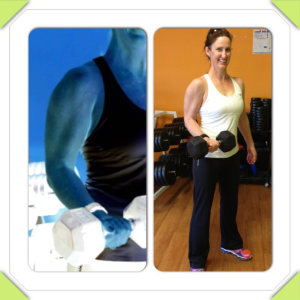 Hi, my name is Terri-Anne.
Hi, my name is Terri-Anne.
I am a runner. And I am a Lifter. I am a mother of 5, forty, fit and finally starting to love this body that lugs me through my busy day. This has been a long journey about self-discovery. Learning my limits, learning my goals, learning how to fall and get back up again. Learning how to do it all wrong then finally working out how to do it right. I’ve learnt the difference between dieting to lose weight and eating to lose fat. I’ve learnt the difference between weighted cardio and lifting heavy. I also learnt that cardio is good for you but if fit is the look you are after, you need to train smarter, heavier, not longer. I have learnt so much on this journey and yet I am only just beginning. Eating more, throwing out the scales and lifting to failure is working for me.
 After having my fifth baby in October 2009 I gained weight. I was busy with 5 children, working with my husband in our farming business and making excuses for not having time to exercise. In February 2010 I was 74kg (163lb), my biggest weight ever. (79kg or 174lb was my biggest full term pregnancy weight) I decided there was no way I was going to buy the next size up in clothes, it was time to stop making excuses. My goal was never to be skinny, all I wanted was to be fit and healthy. I have never been one to obsess over scales, rather I used my favorite jeans to measure my weight. I exercised a little and cut back on some treats, walked everywhere and after doing cardio only exercise for 4mths I was disappointed with my slow progress. I was now 69kg and still feeling fat and ugly.
After having my fifth baby in October 2009 I gained weight. I was busy with 5 children, working with my husband in our farming business and making excuses for not having time to exercise. In February 2010 I was 74kg (163lb), my biggest weight ever. (79kg or 174lb was my biggest full term pregnancy weight) I decided there was no way I was going to buy the next size up in clothes, it was time to stop making excuses. My goal was never to be skinny, all I wanted was to be fit and healthy. I have never been one to obsess over scales, rather I used my favorite jeans to measure my weight. I exercised a little and cut back on some treats, walked everywhere and after doing cardio only exercise for 4mths I was disappointed with my slow progress. I was now 69kg and still feeling fat and ugly.
I joined the local gym and had a weights program written up by a trainer and got some great advice on interval training. This is when the cardio bunny in me was born.  I loved tabata and was doing it every day along with weights – 15reps, 3 sets – 3 times a week. I powered through my workouts, dripping with sweat thinking I was doing all the right things. 12mths after my journey started I was still only 67kg (147lb). My fitness had improved but I was still not getting the results I wanted. I still didn’t look fit and had little tone. I started running. Lost a bit more. But I was still not seeing a fit healthy woman in the mirror.
I loved tabata and was doing it every day along with weights – 15reps, 3 sets – 3 times a week. I powered through my workouts, dripping with sweat thinking I was doing all the right things. 12mths after my journey started I was still only 67kg (147lb). My fitness had improved but I was still not getting the results I wanted. I still didn’t look fit and had little tone. I started running. Lost a bit more. But I was still not seeing a fit healthy woman in the mirror.
I decided at this point that my diet may not have been as good as I thought so I started counting calories and bought a set of scales. I joined MyFitnessPal – an online diet and exercise diary – and set my calories at 1200 per day. I am 173cm (5ft8) tall and at this time weighed 65kg (143lb). The weight started dropping off. I lost a lot and by the end of 2011 I was down to 59kg (130lb)!! I was exhausted. Tired. Hungry. Cranky. I dragged myself through the day and armed with a HRM I dragged myself through workouts burning a minimum of 1000 cals 6 days a week. I did not look fit. I did not feel healthy. What was I doing wrong??? Then I found out that MFP had a community and I ‘met’ Kiki. I read her ramblings every day. I researched her ramblings every day. I read NROLFW. I researched. Could this crazy woman be right? Could I look and feel better if I ate more??? I was lifting – 3 times a week!
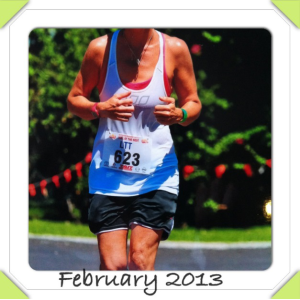 What I was doing was not working so I decided to give this eating thing a go. I decided to trust the process. In January 2012 I purchased a periodized workout plan that Kiki recommended and had decided to increase my cals to 2000 a day. My first ever bulk. I had become dependent on the scales – weighing in on a weekly basis and was not ready to give that up. As soon as I started the workouts I realized that I had not been lifting heavy. In fact all I had been doing was weighted cardio. I lasted 2 months and the ever rising scales did my head in (I had gained a whole kilo or 2lb). All the food did my head in. How could eating all this food help me look better? Not enough running did my head in. I needed to run to remain sane. But I had also tasted heavy weights and I loved it.
What I was doing was not working so I decided to give this eating thing a go. I decided to trust the process. In January 2012 I purchased a periodized workout plan that Kiki recommended and had decided to increase my cals to 2000 a day. My first ever bulk. I had become dependent on the scales – weighing in on a weekly basis and was not ready to give that up. As soon as I started the workouts I realized that I had not been lifting heavy. In fact all I had been doing was weighted cardio. I lasted 2 months and the ever rising scales did my head in (I had gained a whole kilo or 2lb). All the food did my head in. How could eating all this food help me look better? Not enough running did my head in. I needed to run to remain sane. But I had also tasted heavy weights and I loved it.
So in May 2012 I started running again and dropped my cals back to 1200. I immediately became lethargic. This lasted about 2 weeks before I put them up to 1500. Still little energy. I kept it up for another 2 weeks. I went up to 1800 cals. At this point I was able to think clearer. I did more research, looked back through my diaries and realized this Kiki lady knew what she was on about!! At that moment I did an overhaul of my diet. I worked on my macros (who would have thought there was more to food then broccoli and chocolate), tweaking and adjusting, working out what made me feel good. I no longer focused on calories but on the macronutrients in my food.  I made sure I got enough of what my body needed and let the calories fall into place – they usually hit around 1800-2000cals. I cut the running back to 3 days a week and lifting days were for lifting only. I trained less, ate more and finally little muscles started to poke through!!! Finally I started to feel great. Finally I started to see results!! At this point I was 63kg. (138lb) and now only weighing monthly.
I made sure I got enough of what my body needed and let the calories fall into place – they usually hit around 1800-2000cals. I cut the running back to 3 days a week and lifting days were for lifting only. I trained less, ate more and finally little muscles started to poke through!!! Finally I started to feel great. Finally I started to see results!! At this point I was 63kg. (138lb) and now only weighing monthly.
I needed a goal, something to keep me motivated. I decided to do a triathlon – the grueling ’hell of the west’ – 2km swim in a murky river, 80km ride along the highway, and a hot dry 20km run in the Australian outback. Two weeks into training the change in my physique was already showing. I was literally watching the muscle melt away. It was shear relief when my Dr. said he wanted to laser my varicose veins sooner rather than later. I decided that the interruption to training was too long and I would only do the 20km run. I also decided that the only way to maintain as much muscle as possible was to eat and lift to failure. I did not want to go back to skinny. December 2012 I started eating at around 3000 cals a day. I also threw out the scales. Best thing I ever did. Come race day I was a little heavier than a lot of athletes, perhaps this made me a little slower but I was happy to be full of energy and felt and looked fit. (my time was 1hr 40min)
The very next day I went into cut mode. I was cutting at what I had in the past thought was over eating!! I ate 1800cals a day, lifted heavy 3 days a week, did 2 interval cardio sessions and 1 weighted full body cross fit workout. I don’t know if you can call what I do bulking and cutting as my workout schedules don’t really fit the typical bulk/cut model. But it works for me. I’m not trying to compete so my diet and exercise has to be tailored into my life. I stopped cutting mid April when I decided to start training for a Tough Mudder – a 20km mud run. I am now 1 week out from the race. I’ve been eating around 3500cals a day and I feel great. Eating gives me the energy to keep up with all the rigorous training and still live my life. At the moment I do 2-3 cross fit style workouts a week. I run 3-4 days a week and I lift 3 days. I am bruised and battered, my body hurts most days but it’s a pain I love – the feeling you get when your body is repairing and growing.
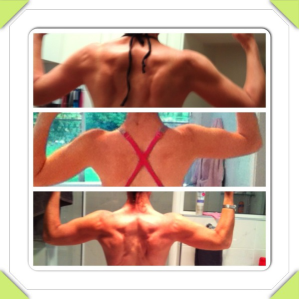
Back Cut Results
I weighed myself before writing this and I have gained 7kg in the last 8mths. I went into full meltdown mode when I saw that number. I couldn’t believe how far I had let myself go. At this point I took some pictures and compared the difference to last time I was the same weight. Wow. If that doesn’t convince you to throw out the scale I don’t know what will??!! I know it’s not all muscle but again if I’m a little slower because I’m a little fluffier, it’s a price I’m willing to pay.
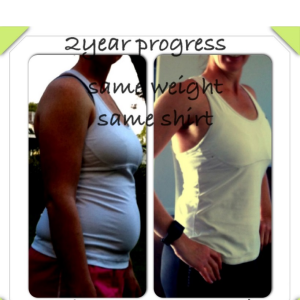
Same weight, same shirt!
I will start to cut again when this race is over and I’m excited to see what lies beneath! I am lifting 3-4 times heavier then when I did the same reps in my first round of periodization. I have learnt to listen to my body. If I need a rest day, I take it. If I need a refuel day, I eat. I feel strong. I feel healthy. I am the same weight I was 2 years ago and look and feel completely different. I will keep running as it keeps me sane. I love to wake up and go for a run. Or not. Maybe sprint intervals. Maybe I’ll try for a PB. I love not planning my runs, I just put on my shoes and let my body do the thinking. I will also keep on lifting. I love the feeling of power. I love seeing the weights go up. I love the structure of a weighted workout. I love the comments. I know that running will make building muscle slower but I am finally at peace with that. I no longer care how many calories I burn in a workout, I work out because I love it. I no longer need the scales – numbers do not define me. I eat to fuel my workout or my current goal. I am not the fastest or the strongest but I am fit and I am healthy.
Share your success, no matter how large or small. You never know who you may inspire to hang on just a bit longer. We love featuring results and journey stories in REAL time, not just before/afters. If you have a victory (scale or not) let us know and allow us to share with the fam, by submitting to success@EM2WL.com

by EM2WL | Jun 7, 2013 | Cardio
Cardio Intensity: High, moderate, or low intensity cardio, which should you do? All have benefits, so picking the one (or better yet, including a mix) that will help you reach your goals is key.
-
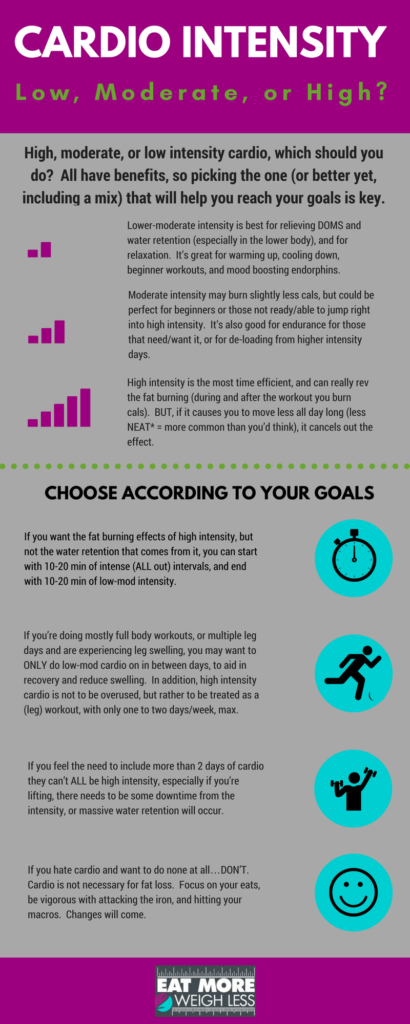
(Click Image to Enlarge)
High intensity is the most time efficient, and can really rev the fat burning (during and after the workout you burn cals). BUT, if it causes you to move less all day long (less NEAT* = more common than you’d think), it cancels out the effect. Common scenario: do a super intense workout, then flop in the closest chair and move less than you would’ve usually the rest of the day. Totally not getting the full advantage of that afterburn. Net effect: pointless, and no different than if you’d just done a lower intensity cardio, or even none at all. Due to the intensity of a perfectly executed HIIT session (similar to a strength workout), you will also tend to experience water retention/swelling. Some people allow this to bother them to the extent that they wonder if it’s worth it.
- Moderate intensity may burn slightly less cals, but could be perfect for beginners or those not ready/able to jump right into high intensity. It’s also good for endurance for those that need/want it, or for de-loading from higher intensity days. Depending on ones definition of “moderate” some swelling/retention may still occur.
- Lower-moderate intensity is best for relieving DOMS and water retention (especially in the lower body), and for relaxation. It’s great for warming up, cooling down, beginner workouts, and mood boosting endorphins.
So which method is best for you? Why choose? Sometimes people get so caught up in looking for the perfect method, that they miss the point. The variety/combo/goal application makes the changes happen. Having purpose is crucial. Mix and match according to your goals, limitations, and personal preferences. At any time, it’s perfectly fine to choose only one, or a combo. For instance:
- If you want the fat burning effects of high intensity, but not the water retention that comes from it, you can start with 10-20 min of intense (ALL out) intervals, and end with 10-20 min of low-mod intensity.
- If you’re doing mostly full body workouts, or multiple leg days and are experiencing leg swelling, you may want to ONLY do low-mod cardio on in between days, to aid in recovery and reduce swelling. In addition, high intensity cardio is not to be overused, but rather to be treated as a (leg) workout, with only one to two days/week, max.
- If you feel the need to include more than 2 days of cardio they can’t ALL be high intensity, especially if you’re lifting, there needs to be some downtime from the intensity, or massive water retention will occur.
- If you hate cardio and want to do none at all…DON’T. Cardio is not necessary for fat loss. Focus on your eats, be vigorous with attacking the iron, and hitting your macros. Changes will come.
Research for cardio is all over the place, and depending on the source it may heavily lean to one side or another. Having the “research bug” can cause us to self sabotage. I’m an avid researcher that has to force myself to ACT. We have to stop ourselves from always over analyzing everything. Sometimes knowledge is power…other times, it’s crippling. There is no, one, perfect way, so researching ourselves into a paralyzed stupor looking for it, is counterproductive.
Speaking from former, knowledge-paralyzed experience.
What about you? What type of cardio do you prefer? Have you found a mix that works best for you? Have you ever gotten so tied up in trying to find the “perfect” method of something that you ended up not doing anything at all?
~~~~~~~~~
*NEAT = Non-exercise activity thermogenesis. AKA what your FitBit (pedometer of choice) measures during “awake” hours. This is basically everything we do that is NOT sleeping, eating or exercise: walking around the house, going shopping, cleaning, fidgeting, etc…
by EM2WL | Feb 27, 2012 | Building Muscle, Cardio, Fat Loss / Cutting, Fitness Cycles (Periodization), Increasing calories
Q: How many weeks should you cut or bulk? I’m so confused as to how low and high I should go. How do I figure it out? I still have a lot of body fat on my thighs that I need to get rid of. I want to build my upper body but think I need to get rid of some of my fat first. Help! What do I do first?
A: When you’re first starting, your Bulk Cut Cycle length can be shorter, until you become more familiar/trusting in the process. I often suggest trying a month of each to start (alternating). As you become more comfortable with bulking, the longer time you can spend in it, the more progress you’ll see. Right now, I do it based on seasons. It’s more convenient for me to bulk during the holidays/cooler months, etc.. It’s much less “mental” for me then, LOL. So, my bulk runs 3 -4 months, minimum, right now.
-4 months, minimum, right now.
Cutting should be closely monitored and you should try your best not to undo your efforts from your bulk. That’s why I recommend alternating at first. During your cut keep protein levels consistent, cardio moderate (until close to the end), try to let the food do the work, and don’t slash the calories all at once. Give yourself wiggle room as you hit plateaus. My cut is usually during spring, never lasting more than my bulk in length (12-16 weeks is typical). I lose as slow as possible (~.5lb/wk), to prevent muscle loss.
During your bulk, take the opportunity to get your cals as high as possible, without overdoing it (200-300 cals over maintenance is a decent starting point). If you bulk for an extended period of time and find your body adapting to the higher calorie level, try raising them a bit higher to see how your body handles it. This will allow for a metabolism reset, allowing you to cut/maintain at higher levels than before. It’s a beautiful thing to be able to cut/maintain at more relaxed cal levels. Because you are lifting exceptionally heavy during your bulk (with lower reps) your body will be able to put those cals to proper use (vs having to budget them as when you’re in a deficit). A basic way of seeing how much you should eat during your bulk, to start, is to use the EM2WL calculator set to “gain muscle.” Women can gain a max of around .25lbs of muscle each week, so this will supply just the right amount of surplus to make sure minimal fat is gained. You can also use that as a reference for how long to bulk for (i.e. say you’re not willing to gain more than 5lbs, plan the bulk for ~10 wks/5lbs, whichever comes first). Even though it seems oxymoronic, because muscle takes up so much less space than fat, you can usually get quite far along in your bulk before the gain is noticeable. More women notice it on the scale before seeing the “gain” on their bodies. But the scale is usually enough to scare us, and make us wanna run, lol.
So, once familiar with the process, you may be better off bulking until you “feel” bulky (aka jeans get too tight, lol), then cutting a bit — and repeating as necessary. You’ll notice that the more you bulk, your cut doesn’t last as long as you planned, because most of the “weight” is muscle, and looks completely different (which is why the scale can’t determine your goals). I’m the same size as my previous “fat” weight, but about 5 sizes smaller, for reference.
Also, it’s perfectly acceptable to start your bulk before reaching “goal” weight. I did. I never have figured out what “goal” was. After so many bulk/cut cycles, my weight vs clothing size doesn’t even make sense anymore, lol.

by EM2WL | Feb 6, 2012 | Cardio, Fat Loss / Cutting
Q: Why do you hate cardio so much? Cardio is good for you isn’t it? But yet it always seems like you’re telling people to “stop doing too much cardio,” or talking about how much you hate it. I’m almost scared to even say that I did cardio around you, because you make it seem like a bad thing…I love cardio, it keeps me sane, keeps my heart healthy and my blood pressure low, and keeps the weight off. So…what’s so bad about it?

What’s so bad about cardio?
A: First, I want to say that if I’ve made you feel bad about doing cardio around me, I’m sorry. I never set out to be the “cardio police” lol, and I would never want to make you feel bad about doing something that you truly enjoy. Typically when you see me making a comment about someone doing “too much cardio,” it’s because that person and I have usually talked privately about them wanting to build/preserve muscle. Usually it’s also a person that I know/knows me well enough to know that I, personally, don’t love cardio.
It’s also usually:
- said in a joking manner,
- said because they’ve asked my opinion, and I’m giving it,
- they despise cardio, but are doing a ton because they think they need to,
- they’re wondering why they’re not packing on the muscle despite the time they’re putting in with the iron, or
- they are eating in a deficit, and NOT eating back their exercise calories.
Cardio, in and of itself is not the devil. I have a soft-spot in my own heart for cardio (especially kickboxing…LOVE!), being that it is what helped me to shed my first pounds and develop an interest in fitness. Also, I suffer from endometriosis, and very poor circulation (due to a developmental issue in my childhood that left me with a much lower red blood cell count than most individuals over the age of two), and keeping a certain cardiovascular level helps me to minimize the effect that those health issues have on my quality of life (while also setting limitations on how much cardio I am physically able to do).
I also choose to keep cardio in my muscle building phase, though many exclude it altogether (in effort to gain as much muscle as possible, while sacrificing none). Cardio can be quite beneficial in the muscle building phase, when done in between weight training days, as a “recovery” workout of sorts. Aerobic (literally meaning “with oxygen”) exercise, aids in muscle recovery by sending oxygen into the very muscles that were worked the day before. This also helps in flushing any remaining lactic acid in the muscle that helps many to cope with the DOMS (delayed onset muscle soreness) that they feel the day after an intense weight workout.

Whoa! Kiki caught ENJOYING cardio?
So… what’s my problem with cardio? The reason that I seem to disapprove when someone is doing cardio is because most people don’t eat enough to fuel their cardio workouts. They are using cardio to come up with an extreme caloric deficit. Basically, many people try to go about it Biggest Loser style. Not that I’m knocking the show (well…maybe I am), as it is very inspirational to see people who WANT to change their lives, and get rid of unhealthy habits. The problem with the mentality that it can leave us with, is that we start thinking that if we workout six hours a day, we can lose 5-10 pounds every week, getting this weight off as quickly as possible. We have to keep in mind that when it comes to weight loss: slow is better, and means that you’re more likely to keep the weight off. Just as the show only lasts for 12-16 weeks, that type of lifestyle cannot carry on forever.
Many professionals (i.e. bodybuilders, fitness models, actors, etc) will sometimes use the more cardio/less food approach as they prepare for a specific event/role, but, again, we are looking at shorter durations of time (at the most intense level), and often they still go about it quite slowly. Bodybuilders will also often go through a period of “reverse dieting” (increasing food intake, even if it results in an initial gain) in order to reset their metabolism once the show is over. Regular folk, however, tend to just stay on that track for much longer than necessary, as their body begins to require the higher levels of cardio and less food scenario. It’s an extremely slippery slope.
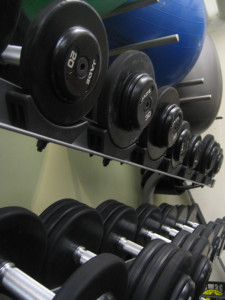
Strength training doubles your fat loss efforts!
Most people that I’ve talked to privately, who’ve asked my opinion on their cardio sessions can attest to the fact that I ultimately always arrive at the same response, regardless of my personal feelings toward cardio, and my “anti-cardio” facade:
“If you want to do the cardio, do it…if you don’t, don’t”
Yes, there are ways to lose weight without cardio. Yes, you can even “cut” without cardio if you wanted. Yes, technically, there are ways to build/keep muscle while still doing cardio, even if takes longer or seems harder (especially in hard gainers like women or ectomorph type), with enough attention to detail, if a cardio junkie can’t let go, or a marathon runner really want’s to counteract the muscle they’re catabolizing during their races, it can be done. You still need to follow the basic principle of eating at a surplus (including eating back your exercise cals!), lifting heavy, and taking in enough protein to support muscle growth. You may end up having to work twice as hard, just to build the same amount (or less) of muscle, but hey, if you can’t live without it, you can’t live without it.
So the question then becomes: are you doing cardio because you can’t live without it, or are you giving yourself extra work because you think you have to? (remember, we’re talking about doing cardio in excessive quantities/lengths here, not your basic 30 min cardio session). Cardio-haters are usually pleasantly surprised/thrilled at the fact that they don’t need to kill themselves on the treadmill in order to get results, and eager to learn more. But the fact remains that you need to be aware of the fact doing excessive cardio, while trying to build muscle can send your body mixed messages, so watch for key signs of over doing it. If you begin to notice muscle loss, lack of progress, not being able to go as heavy on your lifts, etc., it’s typically a classic sign that you are under-eating, doing “too much” cardio, or both. But don’t expect to do a little weight lifting, TONS of cardio, eat at a deficit, and be muscular and “ripped”…unless you just spent the last year in a serious bulk (i.e. eating at surplus, and lifting heavy three or more days per week)
Sorry, can’t “rip” what isn’t there, yet :-/
~~~~~~~~~~~~~
Disclaimer time: For me (Kiki), I find that it’s much easier to just focus on my lifts and do minimal amounts of cardio (2, sometimes 3x’s a week – to keep a cardiovascular fitness level), while either a) eating in a surplus when building muscle, or b) eating in a deficit while leaning out. I do tend to do more cardio in the warmer months, as I’m naturally more active (family bike rides, basketball, gardening, etc), so if my cals are set at a deficit during that time, I am careful to eat back any exercise cals.
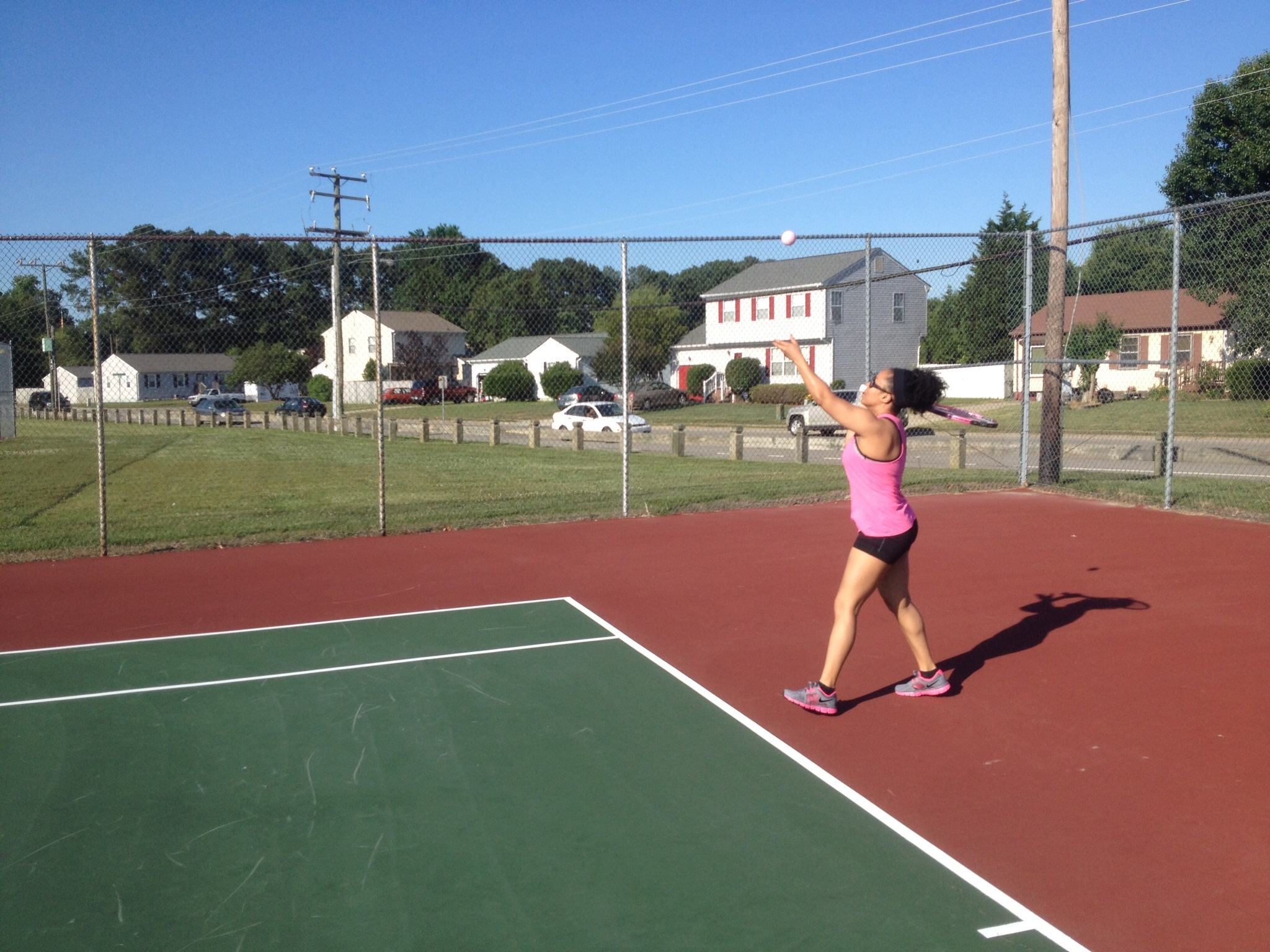
by EM2WL | Jan 24, 2012 | Building Muscle, Cardio, Fat Loss / Cutting
Q*: I am still looking to lose around 25 lbs, but don’t want to lose muscle, how much cardio do you think I should do, or would it be better to do total body workouts for awhile and skip the cardio? Not sure I could do that though, lol.
A: Since you plan on being in fat burning mode for a little while longer, it’s fine if you want to keep some cardio in, until you get to where you want to be. Try not to make cardio your main focus, though, if you can help it.

Do activities that you enjoy for the sake of having fun. Not just to force-feed cardio into your routine because you think you “need” it. Remember “cardio for fun, weights to transform.”
Cardio or Strength Training? Cardio obviously has great health benefits, and we’d never recommend that someone who loves it, completely omit it (just look at Lucia with her beloved Zumba). Instead, we simply make this recommendation from a fat loss goal-based emphasis. It will come in real handy to have that “trump card”– as I like to call it — when you’re close to the finish line, and hit that infamous plateau that comes along. If you are only doing cardio to lose weight, then every time you hit a plateau, you will need to increase your cardio just to get the same results. Before you know it, you’re doing cardio for hours on end, with little to no payoff.
If you are strength training, on the other hand, and hit a plateau, you only need to adjust weight or repetitions to break it. You do NOT have to spend more time doing it, though. Another trick is to try to get a cardio burn from your weights as well, with total body/circuits/and leg work. Those will all help invoke a cardio factor without hours of cardio. They will also help you to preserve the muscle you’ve built so far. You can continue in that manner until you get to a point where you are ready to actually build more muscle (and are no longer eating in deficit), then you can switch it up to suit you.
My only advice is to switch things up every 4-6 weeks, so that your body doesn’t get to used to any one tactic. So if you’re going crazy on cardio and doing full body workouts, switch to a split for maybe 2-4 weeks to provide the shock to your body, so you don’t just fall into a routine. Then you can go back to it if you like. The reason? The last thing that you want for your body is to become “efficient” in fat burning. Though it sounds like a good thing, it’s not. It means that your metabolism slows down and NEEDS the things that you’re doing in order to burn the same amount of calories. Which, net effect will lower your maintenance calories, causing you to have to eat less and less in order to break plateaus, and at the same time have to work harder and harder.
Since our metabolism already declines as we age, there’s NO reason for us to speed up this process. My ultimate goal when losing my weight, was to lose it doing the LEAST amount of cardio possible and eating the MOST amount of food possible, lol (but then again, I was never really fond of cardio). That way, as I came to plateaus or as I aged and those numbers had to increase & decrease (respectively), it will still be manageable…if that makes any sense. Let’s be honest, if being fit/healthy is a lifelong goal, at some point (80-90yrs old?) it MAY be required that we eat next to nothing, and do 3 hours of cardio each day (and possibly another hour at night?), but if we start doing that now then we may be stuck eating nothing and working out 7 hours/day by the time we get to that age (if such an age exists).
*Q & A posts are excerpts from actual submitted emails from clients and fam. Have a question that you’d like to see addressed in Q & A or explained in a future article? Drop us a line below!




 Becca is a busy wife and homeschooling mother to five children ages 5 to 13. About three years ago, she embarked on a journey to health and fitness that resulted in the loss of approximately 100 pounds. Today, she is a competitive powerlifter and strongwoman who loves ice cream and deadlifts. As an ISSA certified personal trainer, she is passionate about helping women to get started on a lifestyle of strength and fitness.
Becca is a busy wife and homeschooling mother to five children ages 5 to 13. About three years ago, she embarked on a journey to health and fitness that resulted in the loss of approximately 100 pounds. Today, she is a competitive powerlifter and strongwoman who loves ice cream and deadlifts. As an ISSA certified personal trainer, she is passionate about helping women to get started on a lifestyle of strength and fitness.


















Recent Comments